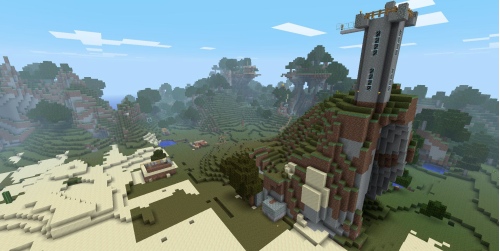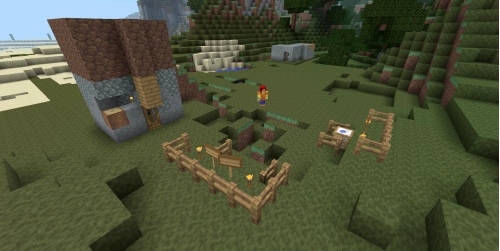 A confession: I am a long-time fan of video games, and as such, I'd say I have pretty high expectations when it comes to gameplay, mechanics, and animation. The latter is particularly made me pretty skeptical that I'd enjoy Minecraft, a game that lets you build worlds out of blocks. A world built out of 3D blocks is, well, blocky, and I couldn't imagine that I'd find much pleasure -- aesthetically or otherwise.
A confession: I am a long-time fan of video games, and as such, I'd say I have pretty high expectations when it comes to gameplay, mechanics, and animation. The latter is particularly made me pretty skeptical that I'd enjoy Minecraft, a game that lets you build worlds out of blocks. A world built out of 3D blocks is, well, blocky, and I couldn't imagine that I'd find much pleasure -- aesthetically or otherwise.
But I was wrong. Minecraft's visual simplicity belies what is a completely open-ended and therefore terrifically complex world. And the best of that world: it's up to the player to design. Minecraft is what's known as a "sandbox" game, giving players almost complete freedom to build within it.
And that's what makes it great for the classroom.
Joel Levin, a computer teacher at Columbia Grammar and Preparatory School uses Minecraft with second-grade students.
Minecraft can be played in single-person or in multiplayer mode, and players can join public servers, or in the case of Levin's class, the game can be run on a private server. By doing the latter, Levin is able to install certain add-ons and mods suited for his students (giving him the power, for example, to place and delete blocks from a distance). But the students do play the multiplayer version, entering Minecraft's brick-building world together and, together, working through various projects that Levin assigns.


